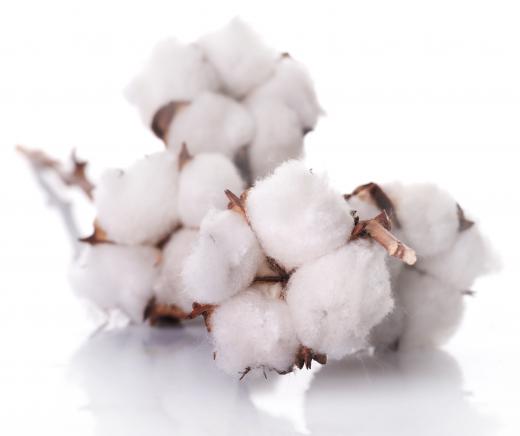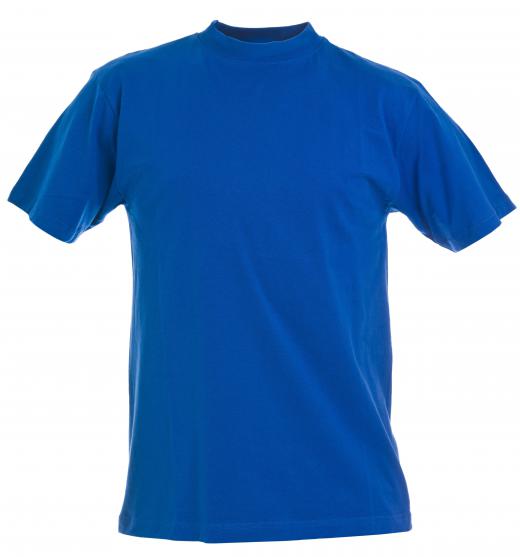The process of making cotton fabric has become a highly industrialized one, especially in developed countries. The harvesting of cotton plants has become largely mechanized in the U.S., Europe, and Australia, but there are numerous cotton-producing nations around the world. After harvesting, raw cotton goes through a cleaning and refining process before it is spun into thread and woven into cotton fabric on looms. While synthetic fibers have seen increased use in recent years, cotton fabric alone still accounts for at least half of all clothing textiles in the world.
Cotton is typically planted in spring, again by machines, which can plant 12 rows of cotton seeds at a time. Under good conditions, the plants generally are visible above the ground within a week. The seedlings mature for about a month and a half, and then begin to flower. Flowering is very brief, and in just a few days after the flower appears, it is gone, and in its place remains the part of the plant that ripens into a pod called a boll. Over two to three months, the boll matures and the cotton fibers in it grow to their full length.

Harvesting occurs once the boll has split open, revealing the cotton, and the fibers have had time to dry in the sun. The leaves of the cotton plant must usually be removed chemically before the harvest, but in some areas, freezing temperatures will cause the plant to lose its leaves naturally. This removal of the leaves allows the cotton to be machine-harvested. Most harvesting machines in the United States blow air at high speeds over the plants to remove the cotton from the boll and collect it.

Once the harvest is complete, the cotton is made into bales to be stored until it is ready to be ginned. At the gin, the bales are all cleaned to separate the cotton fibers from dirt, lint, and the small, sticky seeds that grow as part of the ball of cotton fibers. The de-seeded and cleaned cotton is then once again pressed into bales for shipment. At this point, the cotton is still raw, as it has not been spun into yarn or thread.

Cotton fibers actually lend themselves very well to being spun into yarn. Once the fibers are aligned in a process called carding, they naturally interlock as they are twisted and flattened for spinning. Specialized mechanical looms weave the yarn into cotton fabric in much the same way as was done by hand in prior centuries. These looms work at high speeds to interlace the yarns into a woven fabric known as “gray goods.” Cotton fabric in this state must still be bleached and otherwise pre-treated before it can be made into household products and clothing.
